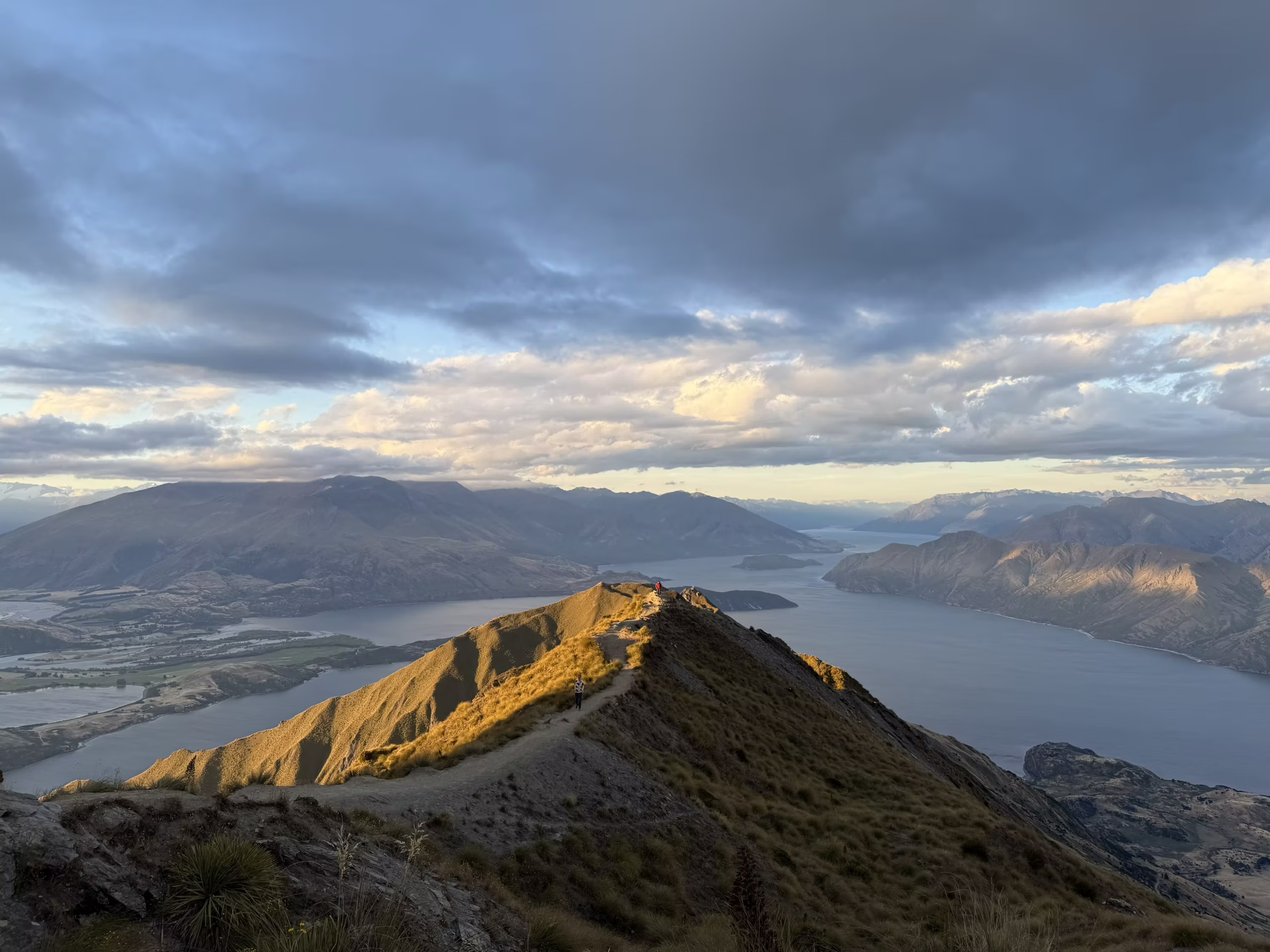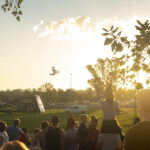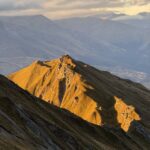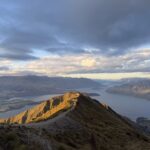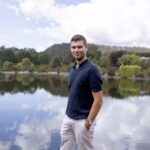Climbing Roys Peak will offer some of the most spectacular views in all of New Zealand, with the gruelling 6-hour hike consisting of a gradual but long incline to the lookout point. Most people like to arrive at the top by sunrise or sunset to enjoy the stunning view across the Wanaka region.
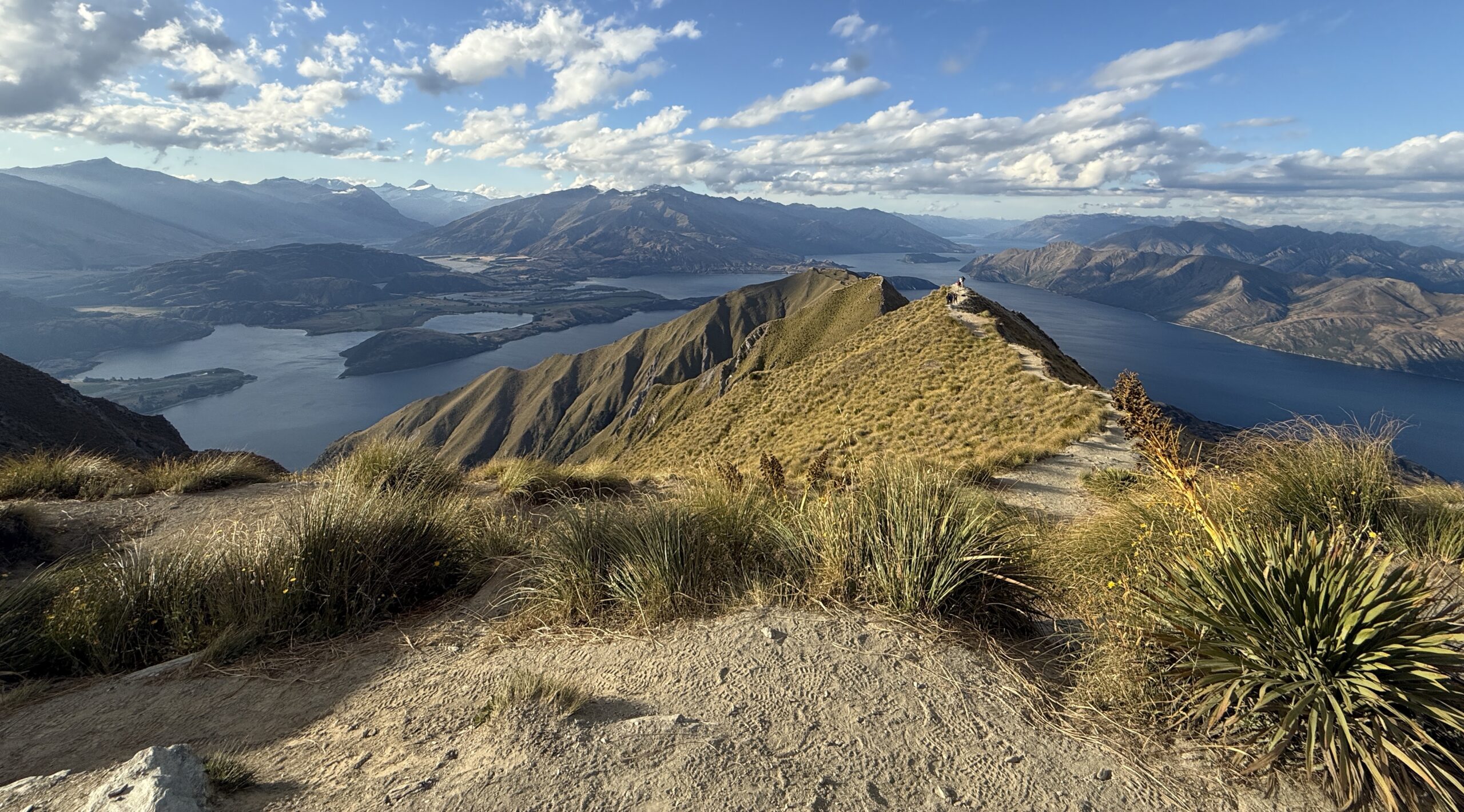
There are two car parks: one paved with marked-out parking spaces, and the other located on private land where a small donation is accepted.
Our first impressions before climbing this hill were excitement—and concern about bathroom availability (there is one at the bottom and another at the top).
Being a well-marked and accessible trail, this is a must-do for anyone fit enough to climb the 1,300 metres to the top.
The Adventure
We started the trail at the Roys Peak car park. Parking here is free, and freedom camping is not prohibited (no signage to indicate otherwise), so we planned to set up camp. We recommend using a bathroom beforehand, as the facilities are not maintained in good condition.
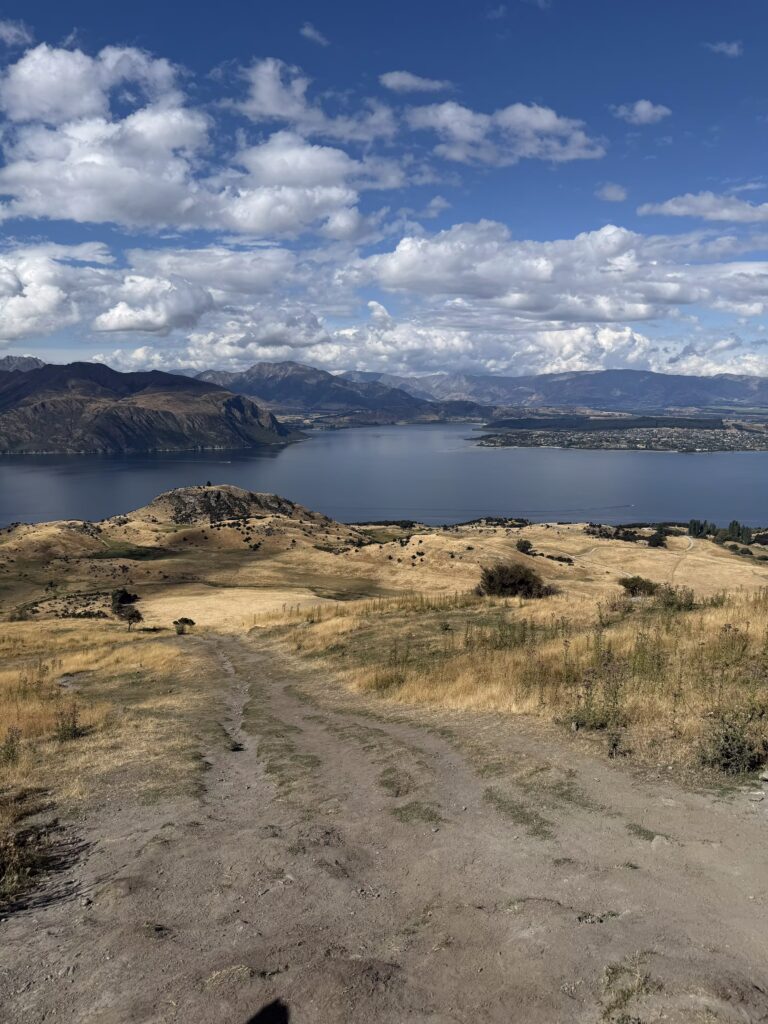
The climb began immediately, heading straight uphill. We swept through many bends, often spotting a lone sheep or two grazing along the side of the path. As we climbed, we watched our car get smaller and smaller, while the top of the mountain still seemed just as far away.
Halfway up, it was challenging to stay motivated. However, if you’re planning on extending your trek, there are picnic areas available halfway up the mountain.
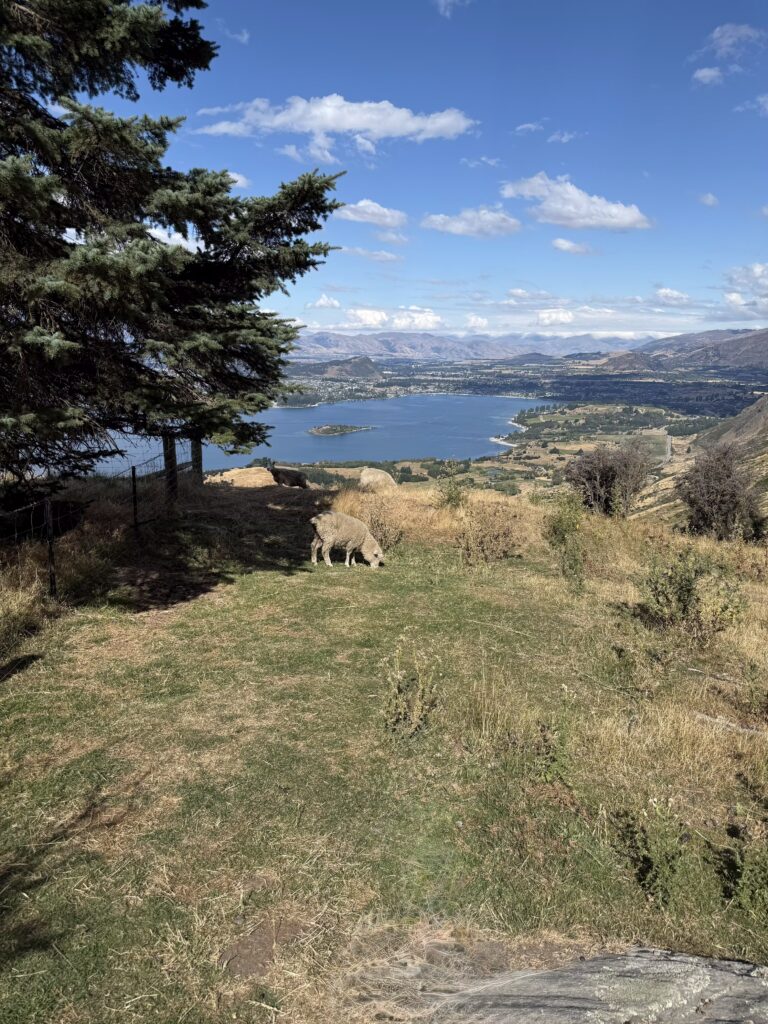
When we arrived at the Roys Peak Viewpoint, we decided this was a great place to stop and end our journey.
Here, there was a toilet and some great Instagram photo opportunities. From this point, you can see the sweeping hills, Lake Wanaka, and the glacier-capped mountains off in the distance.
Since we hiked at the end of the day, we were lucky enough to experience the sunset. Despite it not being school holidays, there were a lot of people at this viewpoint, making it difficult to take photos without others in the shot.
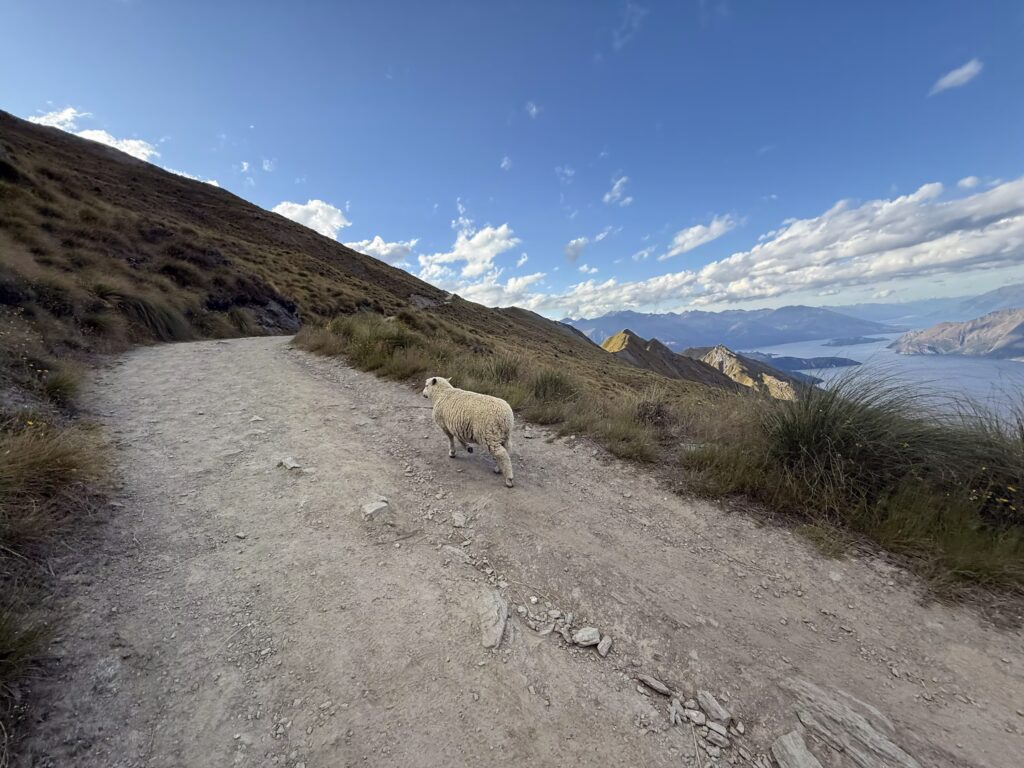
As darkness approached, we began our descent back to the car.
We recommend bringing a flashlight, as it would be easy to get caught out with low phone batteries and end up stranded—especially if there is no moonlight (there is very little light pollution in this region of NZ).
The descent was much quicker than the climb, with far fewer stops. However, you should be extra careful not to slip on the gravel.
Trying this yourself?
Please be advised: The hike is closed for lambing between the 1st of October and the 10th of November.
What to expect
- Hike distance: 16 km
- Duration: 5–6 hours
- Difficulty: Medium
- Time of year visited: Summer
The hike was a constant incline to the top, with very few flat stretches to ease the strain. The trail condition is good, consisting mostly of gravel, primarily used for vehicles passing through the private land.
We recommend hiking in the warmer months, as winter can bring snow.
After experiencing the sunset hike, we would also suggest rising early for a sunrise hike, as there seemed to be far fewer people hiking in the morning than during the afternoon.
The car park is located no more than 6 minutes from Wanaka town centre, on the left side of the road—you won’t miss it!
What we packed
- Plenty of water (there’s no water on the trail, and we ran out… oops)
- Suitable hiking footwear
- A strong mindset (don’t give up)
Photography
I captured most of the shots at the lookout however after the steep walk up that took slightly longer and with the people on the viewpoint it made it a little more difficult to capture some landscapes. When we reached the top it was 8pm (10th of Feb) and was reaching the peak of golden hour. This lighting cast some incredible shadows on the mountain ranges while casting a bright golden light onto the scene. With a slightly cloudy day it created a moody scene that was great for both landscape and portrait photographs alike.
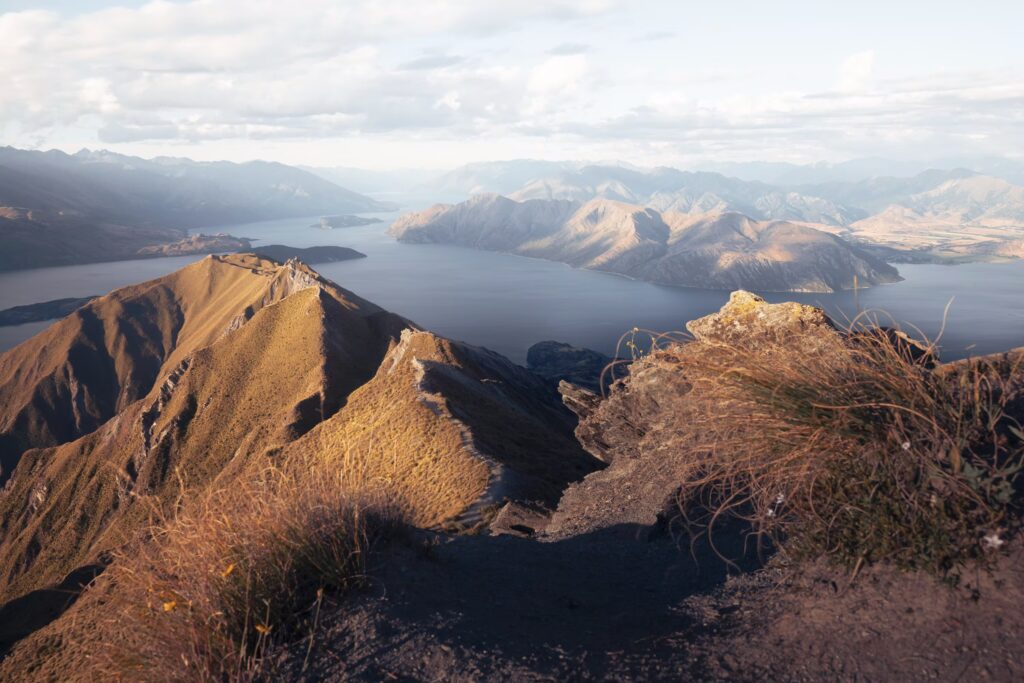
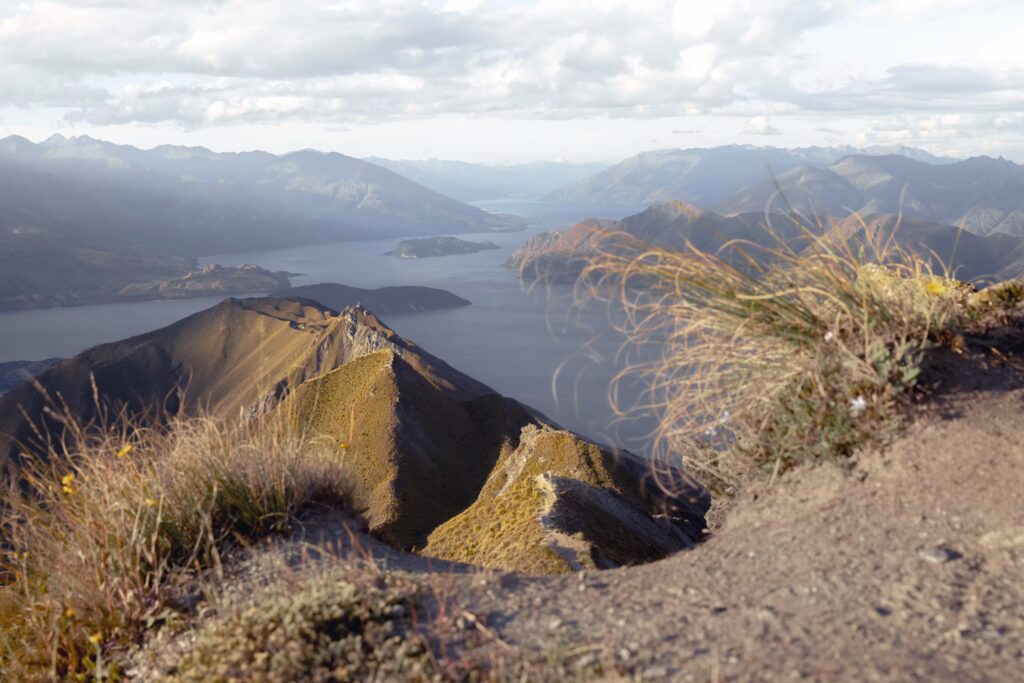
In photograph 1 above I decided to explore a little bit off track from the main area. Taking an off the track route I found a ledge that overlooked the sweeping mountain ranges. The above image was taken as as a long exposure with my 10 stop ND to capture the smooth water of Lake Wanaka. I then changed the camera angle to frame the peaks of the mountains in the foreground however I think it doesn’t encapsulate the feeling of the entire landscape since Im not capturing a wide angle of the mountains in the background.
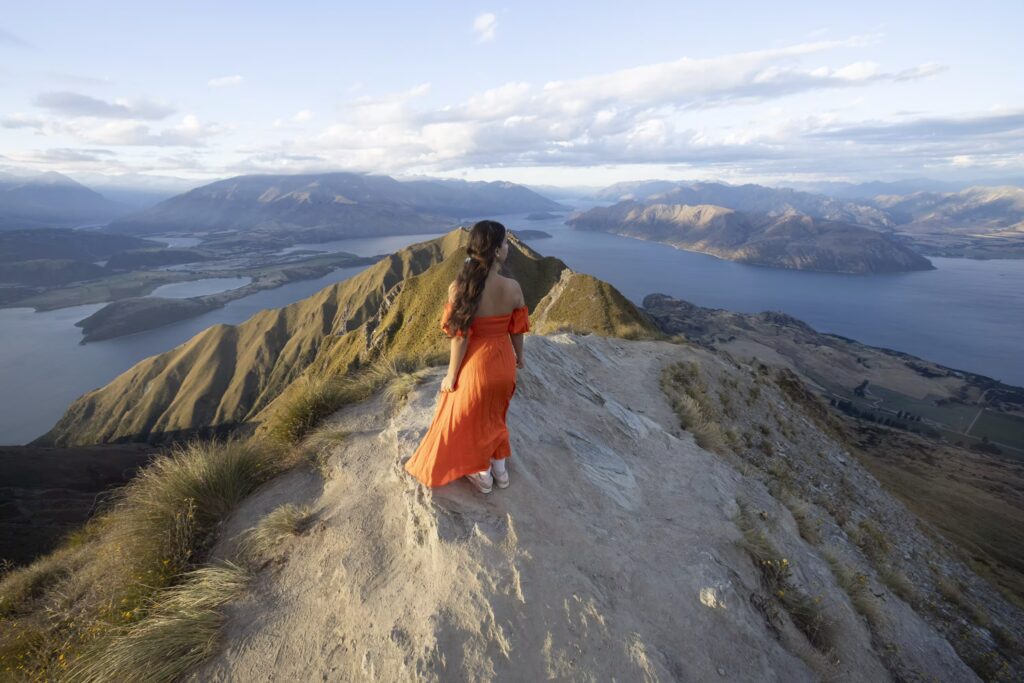
I then changed the lens to my wide angle for some portrait shots of Sarah on the edge of the mountain. What I love about this photo is that it captures the entire landscape. Keeping Sarah as the main subject close to the camera it creates a juxtaposition between her and the mountains (the subject being big and the mountains seemingly small.

